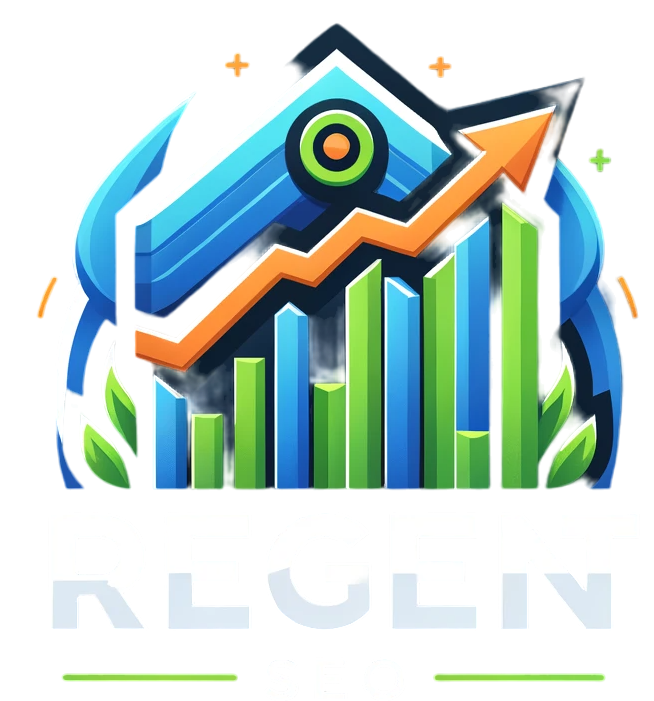Technical SEO services
Structured Data and Schema Markup
Diving into the realm of structured data through schema markup is not just advantageous—it’s downright crucial for amplifying how search engines decipher the tapestry of your website’s content. This intricate code acts like a beacon, illuminating extra layers of context about your pages, and in turn, empowering search engines to unveil richer results that captivate attention—think featured snippets and those eye-catching knowledge panels. With schema markup in their toolkit, businesses can significantly enhance their visibility amid the digital noise, making their offerings irresistibly enticing to curious wanderers.
But wait! The benefits don’t stop at mere rankings; oh no! Structured data also elevates user experience to new heights. When search engines grasp the essence of what you’re presenting with clarity and precision, they’re far more inclined to showcase it in ways that beckon clicks like moths to a flame. And this markup? It’s versatile—a chameleon that adapts across various data types including products, reviews, events…you name it! By deftly weaving schema into your website’s fabric, you’re not just playing the game; you’re setting yourself up with an undeniable competitive advantage in luring organic traffic right through your virtual doorsteps.
Boosting Visibility with Semantic Markup
Leveraging semantic markup transforms the way search engines grasp the nuances of web content. With schema markup in play, website proprietors can weave intricate layers of meaning into their offerings—think products, events, organizations—all laid out with precision! This enriched tapestry of information empowers search engines to craft eye-catching rich snippets that leap off the results page, potentially skyrocketing click-through rates.
By integrating structured data, businesses unlock a deeper comprehension and categorization of their material. This meticulous framework not only helps them shine amid the vast sea of search results but also makes their pages irresistibly appealing to users. Moreover, as search engines ramp up their focus on sites wielding semantic markup, it’s clear: this strategy is pivotal for boosting visibility and elevating search ranking prowess.
URL Structure and Optimization
An intricate and well-structured URL framework is pivotal in the realm of search engine optimization. It’s not merely a tool for helping search engines decipher your page content; it also elevates the user experience to new heights. Imagine clean URLs adorned with pertinent keywords—these little gems can significantly boost both crawlability and click-through rates! Shorter URLs, oh yes, they have this knack for performing exceptionally well, making them a breeze for users to read and remember.
Now, when you’re piecing together an SEO-friendly URL, cast aside any unnecessary parameters and characters that clutter the scene. Embrace hyphens as word separators—they’re champions of readability! And let’s not overlook the beauty of hierarchy within your URL—it serves to further illuminate understanding for eager search engines and curious users alike. Don’t forget: regular reviews and updates to your URL architecture are essential; they keep you in tune with evolving SEO best practices while catering seamlessly to the ever-changing needs of your audience.
Best Practices for Creating SEO-Friendly URLs
URLs are indispensable in the intricate web of SEO, acting as the digital coordinates for your pages. A thoughtfully crafted URL can elevate user experience while also boosting those coveted search engine rankings. It’s vital to weave relevant keywords into your URLs—this isn’t just a technicality; it’s about providing context and clarity. Shorter URLs? They’re not just a trend—they’re easier on the eyes and stickier in the mind, so trim away any extraneous parameters that muddle meaning.
Steer clear of special characters and excessive numerical clutter; they tend to tangle up the URL, leaving users scratching their heads. Opt for hyphens when nudging words apart; this approach enhances readability for both search engines and human visitors alike. Consistency reigns supreme! Forge a standardized format for your URLs across the entire site—this is non-negotiable. And don’t forget: regular audits of your URLs are essential to keep them fresh and aligned with your overarching content strategy.
| Best Practices | Description | Benefits |
|---|---|---|
| Use Keywords | Incorporate relevant keywords in your URLs to provide context. | Improves search engine rankings and visibility. |
| Keep it Short | Avoid long and complicated URLs; aim for simplicity. | Enhances user experience and memorability. |
| Avoid Special Characters | Don’t use special characters or excessive numbers. | Reduces confusion and maintains clarity. |
| Use Hyphens | Separate words with hyphens for better readability. | Improves understanding for both users and search engines. |
| Maintain Consistency | Use a standardized URL format throughout your site. | Supports organization and aids SEO efforts. |
Fixing Crawl Errors
Crawl errors! Those pesky little gremlins wreaking havoc on your website’s accessibility by search engines. They lurk in the shadows, waiting to disrupt your hard-earned visibility in search results. The usual suspects? 404 errors that lead nowhere, server hiccups that throw a wrench in the works, and those frustrating redirects that drop users into a void. But fear not! Tools like Google Search Console are here to shine a light on these issues.
Once you’ve uncovered these crawl conundrums, diving deep into their origins is crucial—like an investigator unraveling a mystery. Is it time to update some links? Or perhaps ensure your server is running smoothly like a well-oiled machine?
Regularly keeping an eye on your site for crawl errors isn’t just smart; it’s essential for achieving peak search engine indexing performance. Adopting a methodical approach when troubleshooting can be the difference between chaos and clarity. This could mean setting up seamless redirects for pages you’ve bid farewell to or fine-tuning your sitemap so it’s as inviting as possible to crawlers—not forgetting about ensuring that robots.txt doesn’t inadvertently shoo away search engines from vital content!
By staying one step ahead of these glitches and managing them proactively, you’re not only enhancing user experience but also turbocharging your site’s SEO prowess!
Tools and Techniques for Troubleshooting
A veritable smorgasbord of tools lies at your fingertips, ready to aid in the intricate dance of identifying and rectifying crawl errors. At the forefront is Google Search Console—a crucial platform that unravels the enigmatic ways search engines engage with your website. It serves as a vigilant sentinel, notifying webmasters about troublesome matters like broken links, server hiccups, and indexing snags that can throw a wrench in the works.
But wait! There’s more—enter third-party powerhouses like Screaming Frog and Ahrefs. These heavyweights dive deep into the digital abyss, crawling websites with fervor and spitting out detailed reports on myriad technical SEO intricacies. With their help, you can shine a flashlight on issues lurking in the shadows that might stymie your site’s performance.
Yet don’t overlook the human touch amidst this sea of automation! Manual methods also hold treasures when it comes to illuminating crawl errors. Delving into server logs provides a fascinating glimpse into how those tireless search engine bots traverse your site’s landscape. Such scrutiny may unveil patterns—perhaps specific pages that seem to be perpetual troublemakers returning error after error.
And then there are regular site audits—the linchpin ensuring automated insights harmonize with human intuition. By weaving together these strands of analysis, webmasters wield an arsenal capable of troubleshooting woes effectively while propelling their site’s technical prowess skyward!
HTTPS and Website Security
Security has morphed into a pivotal cog in the machinery of website performance and user trust. Delving into HTTPS is not merely about encrypting the data swirling between users and servers; it’s also a bulwark against lurking cyber threats, safeguarding sensitive information like a digital fortress. Search engines, with Google leading the charge, have begun to favor these secure havens—often nudging them up the ranks above their non-secure peers. This evolution positions HTTPS as an indispensable piece of any savvy SEO playbook.
In this age where visitors are more conscious than ever about online security, establishing an HTTPS connection becomes paramount for credibility’s sake. A lack of SSL certification can lead to ominous warnings that send potential users scurrying away from engaging with your content or services. By locking in that secure connection, businesses do more than just climb search engine ladders—they cultivate a safer browsing landscape that invites interaction and builds loyalty among users.
The Importance of Secure Connections for SEO
A secure connection—it’s not just a technical detail; it’s the very bedrock of user data protection and trust in the vast expanse of the web. As cyber threats proliferate like weeds, users find themselves gravitating toward sites that flaunt HTTPS like a badge of honor. And let’s be real: search engines are now on this bandwagon too, prioritizing these secure havens and boosting their visibility in rankings. Implementing HTTPS isn’t merely about safeguarding sensitive information; it’s an upgrade to the entire user experience—a digital embrace that says, “You’re safe here.”
But wait! There’s more! Beyond just keeping users safe from prying eyes, secure connections are pivotal players in the high-stakes game of search engine optimization (SEO). Giants like Google have made no bones about their preference for HTTPS when distinguishing trustworthy sites from those lurking in shadows. Making that leap to a secure connection isn’t just a checkbox—it can catapult your site into improved visibility within search results, transforming click-through rates into soaring heights and ushering waves of organic traffic right to your doorstep. What could be better?
- Enhanced trust with users encourages longer visit durations.
- Improved user experience leads to reduced bounce rates.
- Boosted search engine rankings can drive more organic traffic.
- Greater likelihood of referral traffic from other secure sites.
- Increased conversion rates as users feel safer making transactions.
- Effective protection against data breaches enhances brand reputation.
- Aligning with SEO best practices helps future-proof your website.
Regular Technical Audits
Regular technical audits aren’t just beneficial—they’re absolutely essential for the vitality and functionality of a website. These meticulous assessments unearth issues that could stymie search engine crawling and indexing, lurking in the shadows like hidden gremlins. Imagine discovering broken links, duplicate content, or sluggish loading times; these are not mere annoyances but potential roadblocks to your site’s success! Swiftly tackling these pitfalls can significantly elevate user experience while simultaneously boosting search rankings.
Now, let’s talk about continuous monitoring—an integral player in this ever-evolving digital landscape where algorithms shift like sand beneath our feet. Consistent audits pave the way for compliance with best practices, all while shining a spotlight on optimization opportunities that might otherwise slip through the cracks. When you act on audit insights? That’s when true visibility flourishes, possibly even igniting higher conversion rates as time marches on. A proactive stance isn’t just smart; it cultivates an enduring online presence tailored to meet both user desires and the rigorous demands of search engines alike.
Importance of Continuous Monitoring and Improvement
Frequent technical audits? Oh, they’re absolutely vital for keeping a website in tip-top shape! You see, search engines are like restless creatures—constantly shifting their algorithms, which can turn rankings and visibility upside down. By diving into regular monitoring sessions, you can uncover pesky issues lurking beneath the surface: think broken links that trip users up, sluggish loading times that test patience to its limits, or tangled redirect chains that muddle the user journey. This vigilance allows businesses to pivot swiftly when changes arise, ensuring they stay sharp and competitive in the ever-evolving digital arena.
Now let’s talk about implementing a feedback loop—it’s like opening a treasure chest of SEO refinement possibilities! By tracking key metrics—organic traffic trends fluttering here and there, conversion rates dancing around unpredictably, or crawl errors popping up now and then—website owners can zero in on specific areas begging for attention. And what about those glorious insights from analytics tools? They serve as guiding stars for decision-making processes that lead to an optimized site bursting with potential! This proactive dance doesn’t just elevate search engine rankings; it supercharges user engagement and keeps visitors coming back for more.
Conclusion
Technical SEO services are absolutely essential for amplifying a website’s visibility and performance amidst the chaotic landscape of search engine results. By weaving in strategies like structured data, finely tuned URLs, and consistent audits, businesses can effectively align their sites with the ever-demanding criteria set forth by search engines. Layering on robust security measures such as HTTPS not only fortifies a site’s credibility but also cultivates user trust and engagement—an absolute must in today’s digital arena.
With search engine algorithms perpetually shifting and evolving like an unpredictable tide, adopting a proactive stance toward technical SEO becomes imperative. Continuous monitoring and agile adjustments are vital to sustain optimal performance while seizing new opportunities that arise from this dynamic environment. Embracing these best practices doesn’t just drive organic traffic; it significantly enhances user experience too, ultimately positioning a business for enduring success online—a journey filled with twists and turns!







